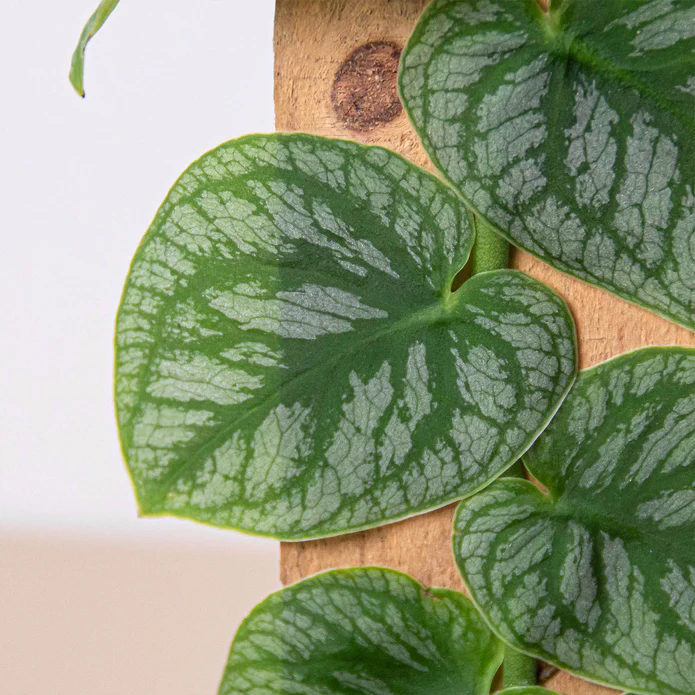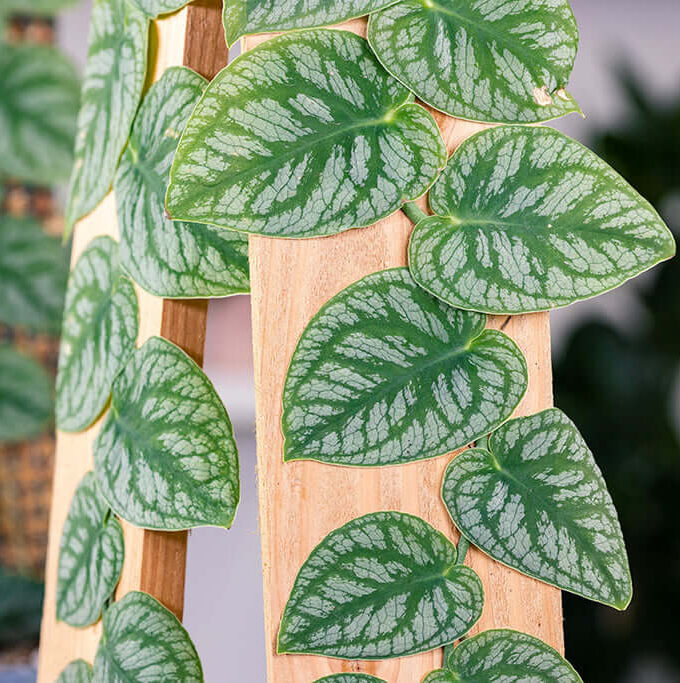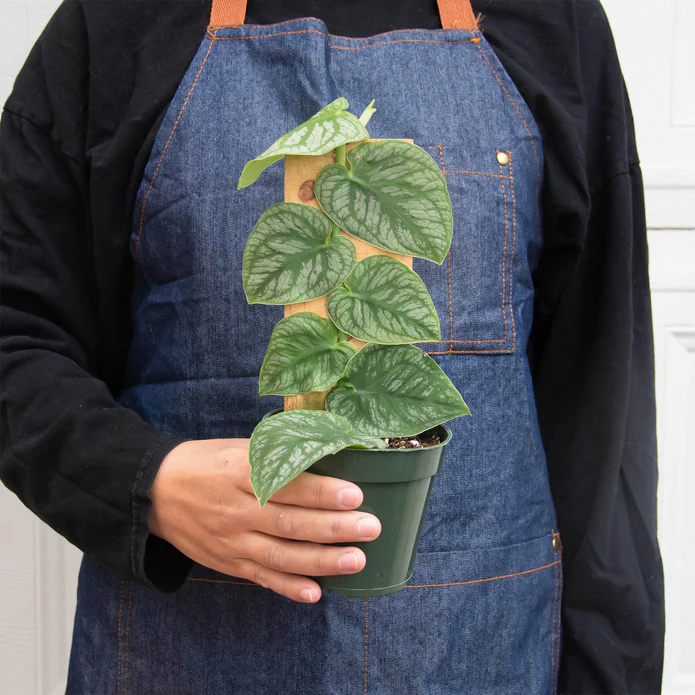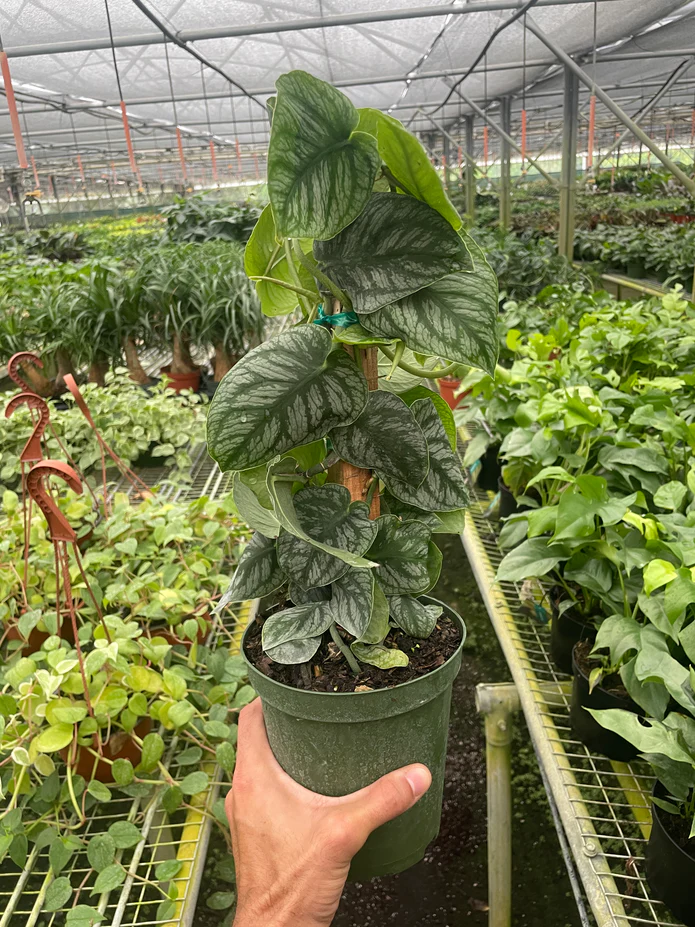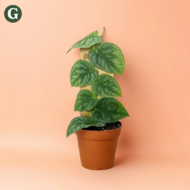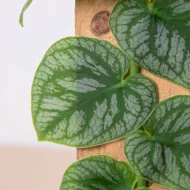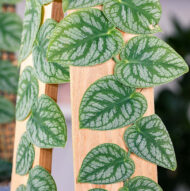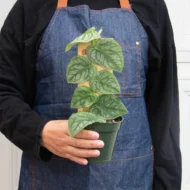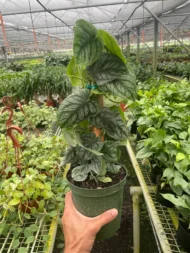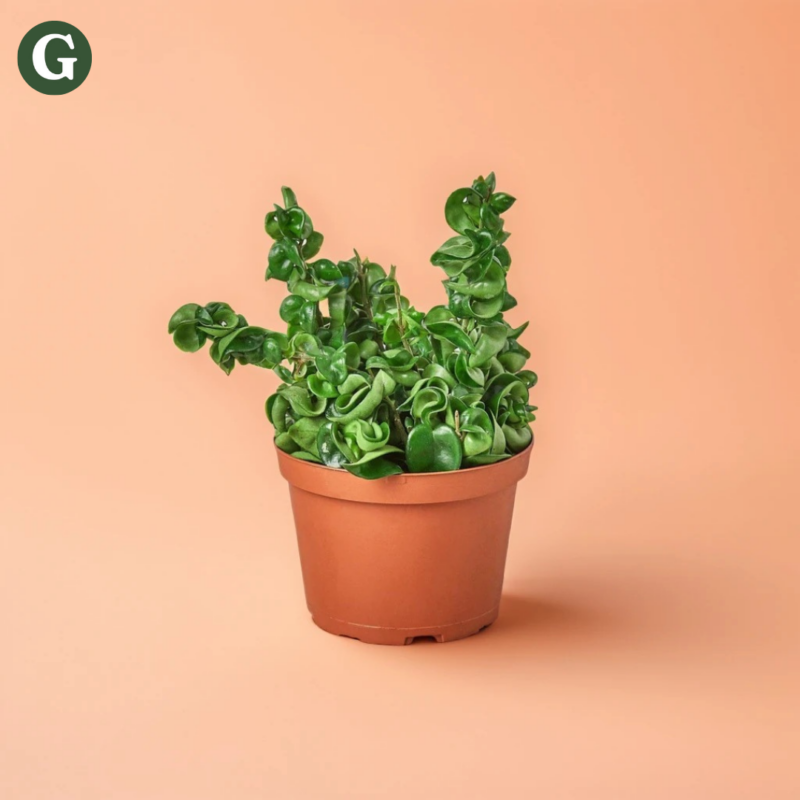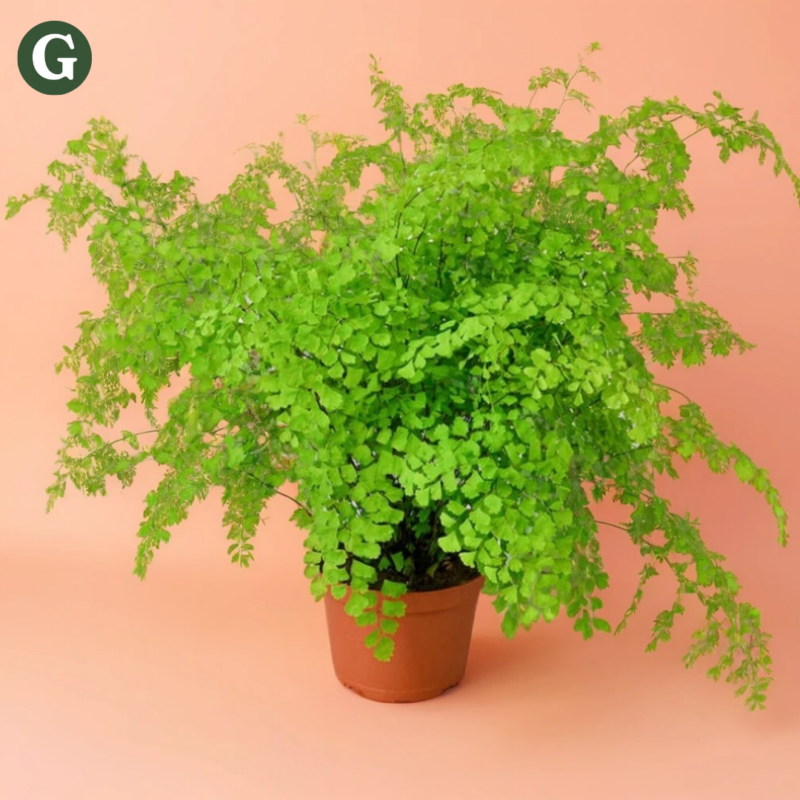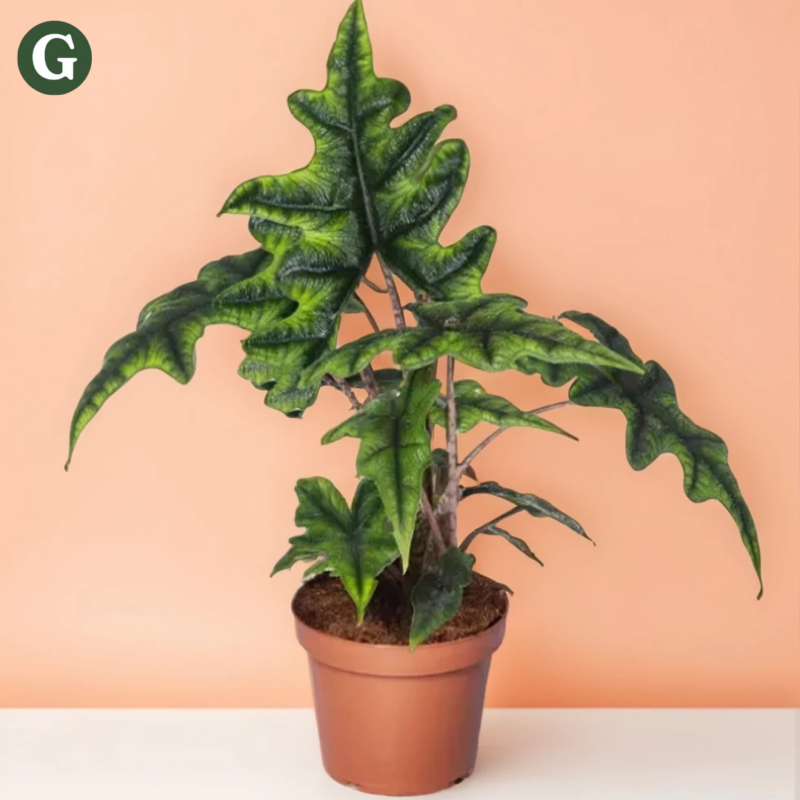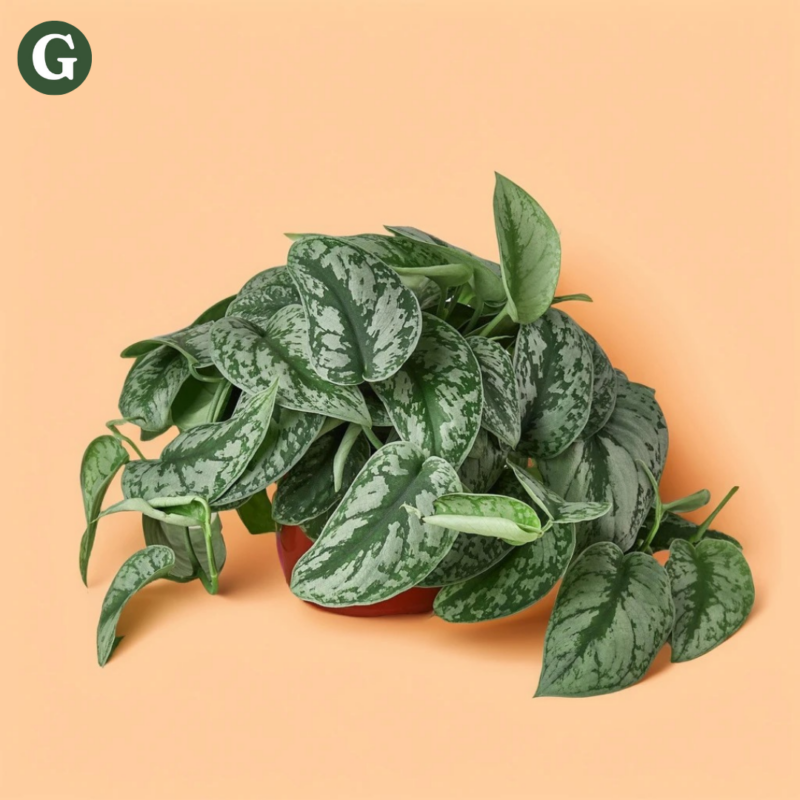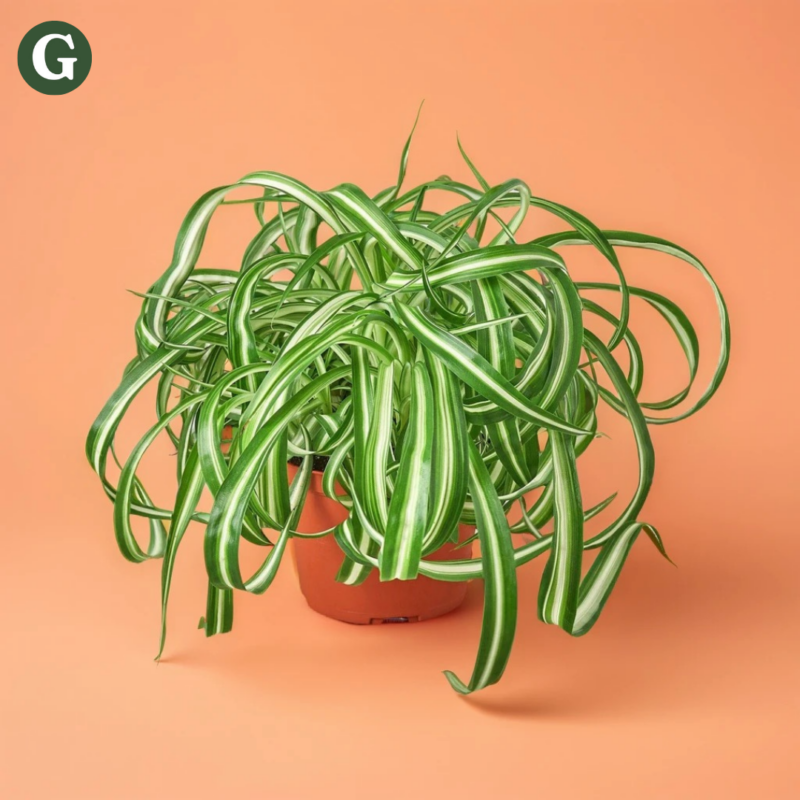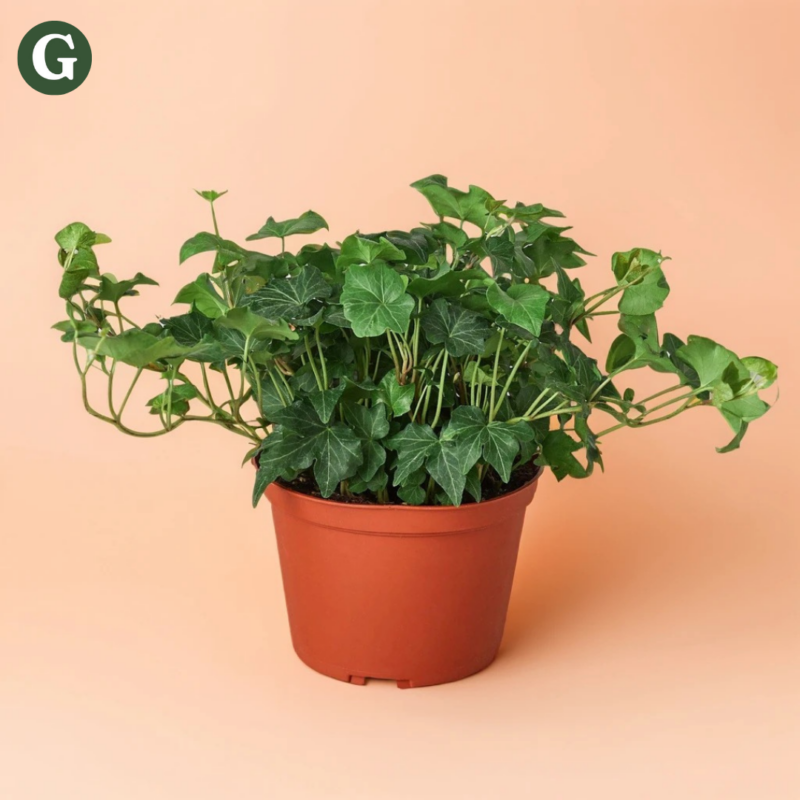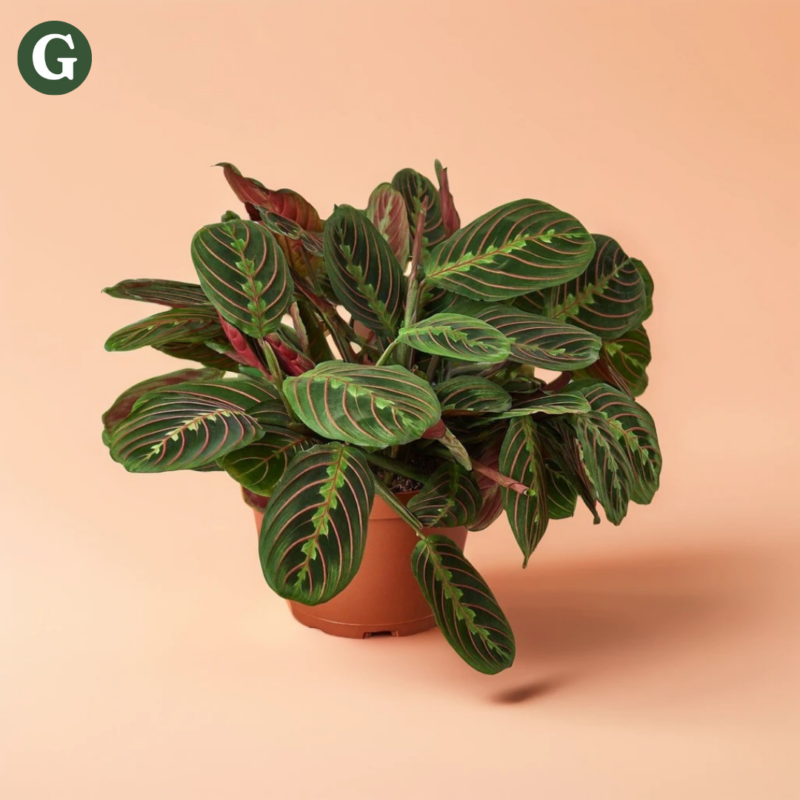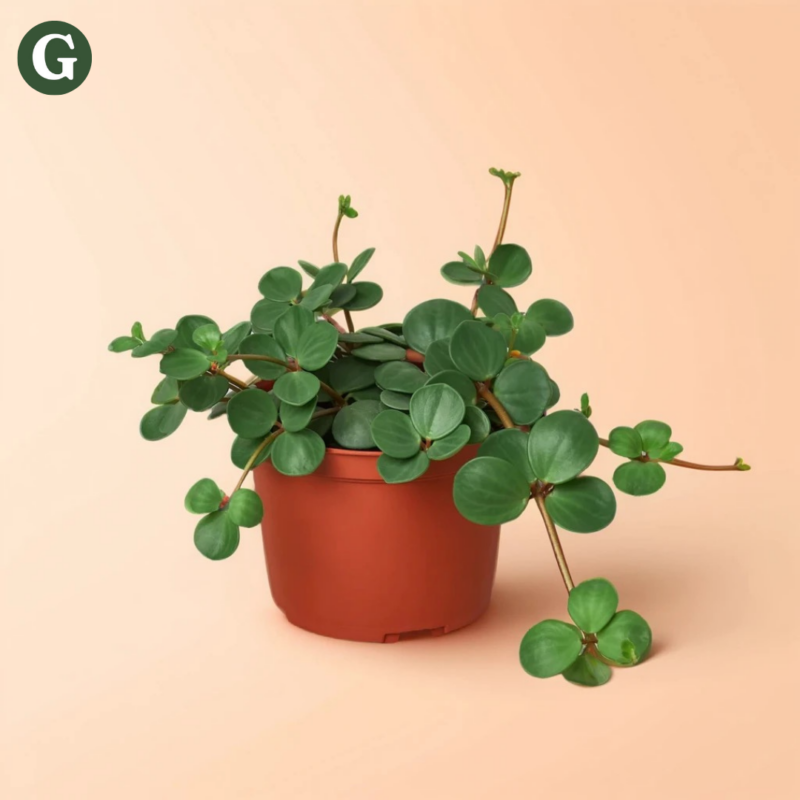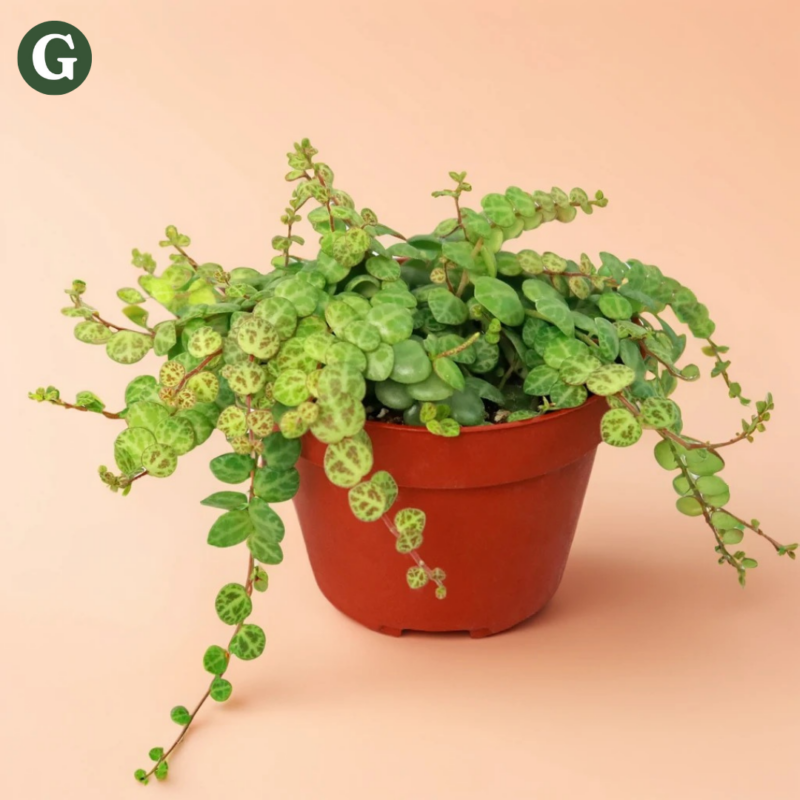Monstera Dubia ‘Shingle Plant’
Botanical Name: Monstera dubia
Common Name(s): Shingle Plant, Monstera Dubia
The Monstera dubia, commonly known as the Shingle Plant, is a unique and rare species of Monstera that grows in a distinctive shingling pattern, with each leaf lying flat against its climbing surface. Native to Central and South America, this plant’s juvenile leaves are small and heart-shaped, but as it matures, it may develop the iconic Monstera fenestrations (splits) if provided with the right conditions. Monstera dubia grows as a compact vine, making it an intriguing choice for moss poles or other vertical supports.
This plant thrives in bright, indirect light and high humidity, mimicking the tropical rainforest conditions it’s accustomed to. It prefers well-draining soil that retains some moisture, and it’s best to allow the top layer of soil to dry slightly between waterings. The Shingle Plant can be somewhat finicky but rewards careful care with its unique, shingling growth habit.
The Monstera dubia is known to help purify the air by removing toxins and releasing oxygen. While all plants provide some degree of air purification, Monstera plants are particularly effective in larger spaces due to their size and leaf surface area.
Note: Monstera dubia is considered mildly toxic to pets and humans due to calcium oxalate crystals, which can cause irritation if ingested. Keep this plant out of reach of pets and small children to ensure safety.
Care Insights & Expert Tips
- Climbing or trailing: Monstera dubia is a vining plant that can be trained to climb a moss pole or allowed to trail.
- Slow growth: This plant is a slow grower, so be patient.
- Unique leaf shape: The plant starts with small, heart-shaped leaves and gradually develops larger, fenestrated leaves as it matures.
- Pruning: Trim any damaged or overly long vines to maintain the plant’s shape and prevent legginess.

Visit our plant care library
Find essential tips to keep your plants thriving, vibrant, and healthy.

